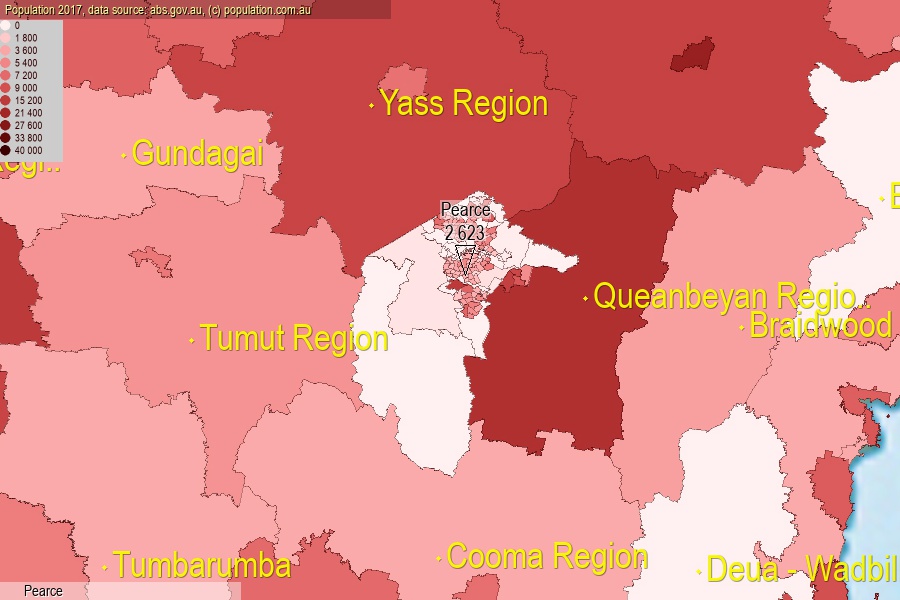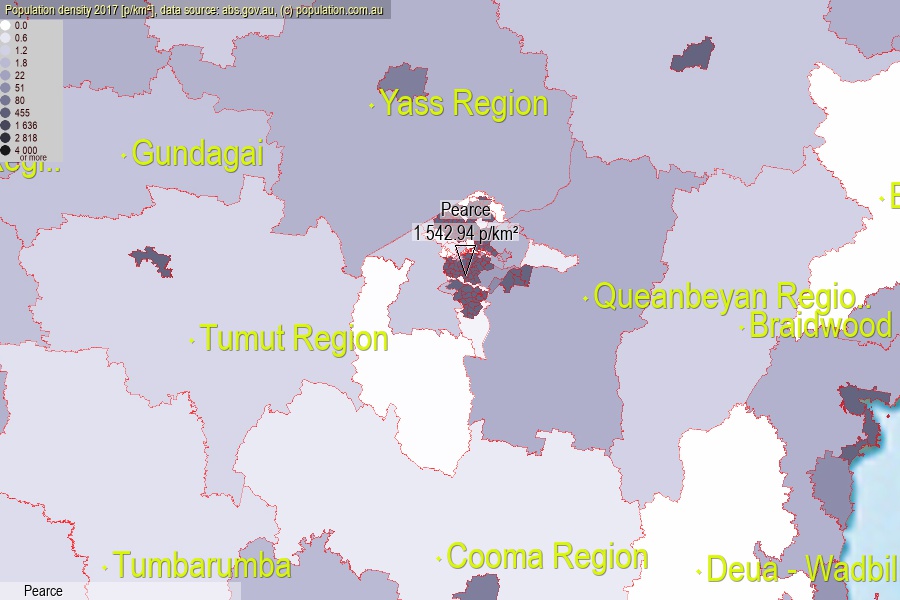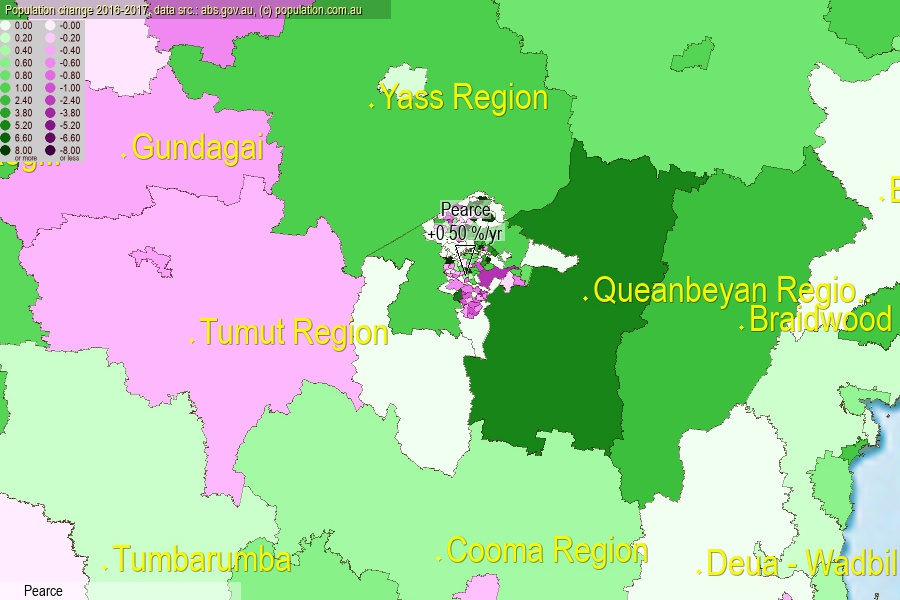 population.com.au
population.com.auLast official estimated population of Pearce (as Statistical Area Level 2) was 2 623 people (on 2017-06-30)[2]. This was 0.01% of total Australian population and 0.626% of ACT population. Area of Pearce is 1.70 km², in this year population density was 1 542.94 p/km² . If population growth rate would be same as in period 2016-2017 (+0.5%/yr), Pearce population in 2025 would be 2 729. [0]



Click to enlarge. Pearce is located in the center of the images.
Population [people], population density [p./km²] and population change [%/year] [2]
View borders » (new window) [4]
[1991-1992] +0.56 %/Yr.
[1992-1993] +0.07 %/Yr.
[1993-1994] -1.08 %/Yr.
[1994-1995] -0.60 %/Yr.
[1995-1996] -0.68 %/Yr.
[1996-1997] -2.89 %/Yr.
[1997-1998] -1.18 %/Yr.
[1998-1999] -0.95 %/Yr.
[1999-2000] -0.32 %/Yr.
[2000-2001] -0.36 %/Yr.
[2001-2002] +0.97 %/Yr.
[2002-2003] +1.08 %/Yr.
[2003-2004] +0.91 %/Yr.
[2004-2005] +1.33 %/Yr.
[2005-2006] +0.73 %/Yr.
[2006-2007] +0.46 %/Yr.
[2007-2008] +0.42 %/Yr.
[2008-2009] +0.27 %/Yr.
[2009-2010] +0.23 %/Yr.
[2010-2011] -0.26 %/Yr.
[2011-2012] +0.53 %/Yr.
[2012-2013] -0.72 %/Yr.
[2013-2014] -0.46 %/Yr.
[2014-2015] -0.23 %/Yr.
[2015-2016] -0.15 %/Yr.
[2016-2017] +0.50 %/Yr.
[0] Calculated with linear interpolation from officially estimated population
[1] Read more about SA2 and Australian Statistical Geography Standard (ASGS) on abs.gov.au
[2] Population data from Australian Bureau of Statistics (Population and density: 2017; change: 2016-2017)
[3] Digital Boundaries: Australian Statistical Geography Standard (ASGS) 2016.
[4] Border coordinates are simplifyed using Ramer-Douglas-Peucker algorithm.